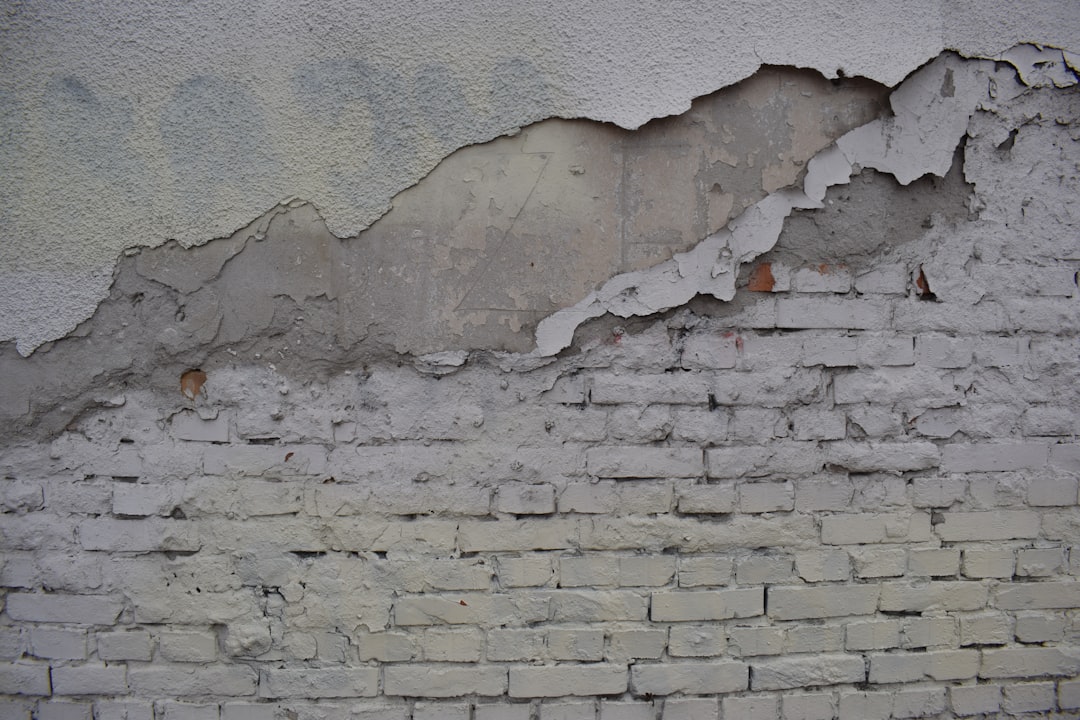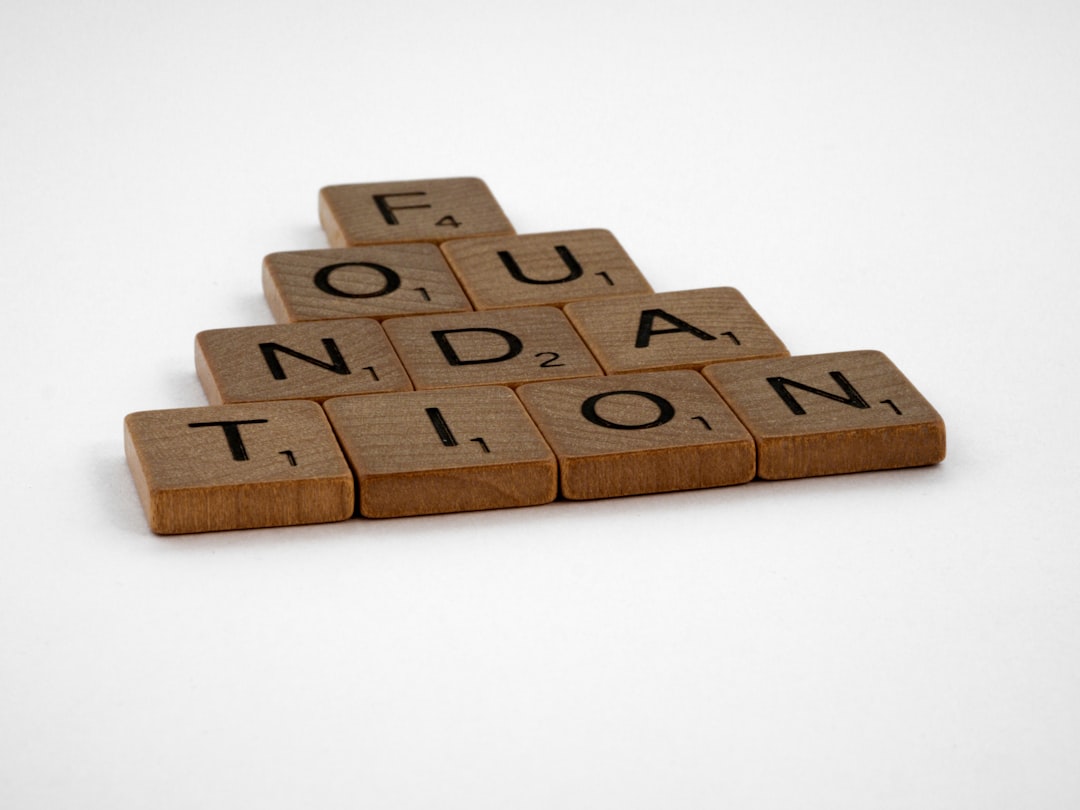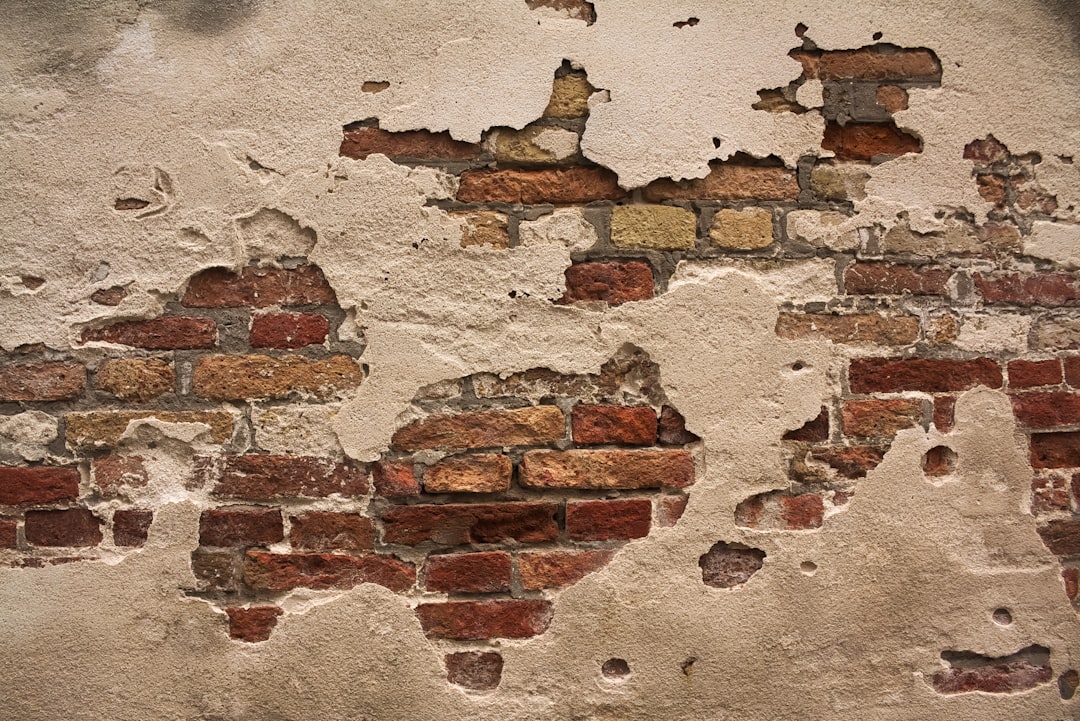

Engage prospects with a scan and streamline customer engagement with FREE QR code marketing tools by Sona – no strings attached!
Create a Free QR CodeFree consultation

No commitment

Engage prospects with a scan and streamline customer engagement with FREE QR code marketing tools by Sona – no strings attached!
Create a Free QR CodeFree consultation

No commitment
In today’s digitally driven world, QR codes have evolved from a novelty into a strategic powerhouse that connects offline engagement with online action. For foundation repair companies, QR codes offer a simple and highly effective way to increase qualified leads, streamline customer communication, and shorten the path from curiosity to conversion. No app downloads, no manual data entry—just a quick scan that moves a homeowner from a yard sign or truck wrap to a booking or quote request page in seconds. Build trackable QR codes that turn every scan into measurable action.
Traditional analog workflows like paper inspection forms, static brochures, and manual appointment systems create friction and data gaps. Prospects investigate your services in the real world, then drop off when the next step requires extra effort or time. QR codes close this gap by making every print asset and jobsite surface interactive and trackable. Place codes on estimate sheets, service vehicles, yard signs, and mailers to give homeowners a self-serve route to request an estimate, view before-and-after galleries, or read verified reviews while their interest is highest. Add codes to direct mail to capture neighborhood intent and attribute results down to the route.
This article shows how foundation repair companies can strategically deploy QR codes to eliminate bottlenecks in customer acquisition, capture more demand in local markets, enrich CRM data with real-world intent signals, and attribute revenue to specific placements. You will learn practical tactics, creative use cases, and measurement strategies that turn everyday materials into measurable, revenue-driving assets. Explore more ideas in our use case library.

One of the most persistent challenges in foundation repair is capturing lead intent at the moments that matter. A neighbor slows down to look at your crew’s work, a homeowner glances at a brochure on the kitchen counter, or a past customer flips through a warranty packet months after a project. Without a direct digital onramp and immediate call to action, interest fades and competitors step in first.
QR codes turn these micro-moments into measurable next steps. By guiding scanners to the right destination in one tap, you reduce friction at the top of the funnel, increase the number of high-quality leads, and accelerate cycle time from curiosity to scheduled inspection. The result is a more predictable pipeline and a lower cost per opportunity.
Outdated analog processes like paper quote requests, phone-only booking, and generic brochures waste precious intent. QR codes remove those barriers. A homeowner sees your truck, scans a code, views a 30-second pier installation video, and taps a button to book an inspection. With Sona QR, you can build codes, route scans to dynamic pages, and measure conversion paths from the first moment of engagement.

Foundation repair is inherently local and trust driven. You win when people physically see your crews, your signage, or the results of a completed project. The challenge is that traditional touchpoints are static. Yard signs, truck wraps, and flyers cannot capture who engaged or what they wanted next. Relying on phone calls alone leads to missed opportunities because many prospects prefer to research quietly before reaching out.
QR codes transform physical assets into interactive gateways that compress the research timeline and bring prospects onto a trackable digital path. A single scan can open a quote form, save a contact card, or launch a prefilled SMS for a callback. Dynamic QR codes can even switch destinations by season or promotion, so your print remains fresh and relevant without reprinting. For deeper strategies, see QR codes in marketing.
The bottom line is control. QR codes bring visibility and responsiveness to physical marketing, letting you capture demand as it arises and guide it toward qualified conversations.

QR codes are flexible. They can launch a web page, pull up a contact card, initiate a text, or route a user to the right app store. Foundation repair teams should match the format to the intent of the moment to reduce friction and improve outcomes.
For most campaigns in this vertical, dynamic QR codes are the default choice, since they enable tracking, destination updates, and ongoing optimization. Static codes can still work for evergreen resources like PDF warranties or maintenance guides where tracking is not required.

Foundation repair customers often experience long consideration cycles. They notice cracks, read yard signs around the neighborhood, and ask neighbors about crews they saw. Growth comes from placing QR codes exactly where curiosity appears and making it effortless to take action in the moment.
Use the following placements to intercept intent and convert it into measurable leads:
Every placement should include a short, benefit-driven call to action and a mobile-first destination. When people know what they will get from scanning, engagement rises and conversion becomes predictable.

QR codes shine when they remove friction from common customer interactions and add measurability where it was missing. The most effective use cases tend to cluster around lead capture, proof of quality, and trust building.
To deepen value, pair each use case with a smart follow-up. For instance, a scan that views galleries can trigger an email sequence explaining repair options, financing, and warranties. A scan that initiates a quote can trigger SMS reminders to finalize scheduling. With Sona QR connected to your CRM, these workflows can be automated and measured.
Every scan captures a valuable signal: where the person was, what they wanted, and how urgent their need might be. If you deploy multiple QR codes across touchpoints, you can segment audiences automatically, then retarget with messages that match intent and stage. For step-by-step tactics, see intent-driven retargeting.
Start by creating codes that map to the funnel. For awareness, use codes on truck wraps and lawn signs that drive to educational content or short galleries. For consideration, use codes on brochures and inspection reports that dive into methods and financing. For conversion, use codes on estimates that open scheduling with a discount or priority slot.
Foundation repair has distinct audience types that benefit from tailored follow-up. Homeowners near an active jobsite may be concerned about similar issues. Property managers scanning from invoices might need multi-property estimates. Real estate agents scanning at a booth likely want inspection turnaround times and repair documentation. Treat these as separate segments, and your retargeting will feel relevant rather than repetitive.
QR codes are connective tissue across your offline and digital marketing. They unify brochures, trucks, events, and video into one measurable system that tells you which touchpoints drive the pipeline and which need refining. When every scan lands on a focused destination and every scan event is tracked, your entire mix becomes smarter and more accountable.
Consider the following foundational integrations for a typical foundation repair marketing stack:
Treat QR codes as the offline onramp to your digital marketing engine. With a centralized platform like Sona QR, you can manage every code in one place, monitor performance in real time, and sync scan data to your CRM and ad platforms so that every offline interaction becomes a measurable step in the buyer journey.
Even a strong QR strategy can falter without disciplined execution. Use the following steps to go from idea to impact with clarity and control.
Start by anchoring your QR initiative to one measurable outcome. Foundation repair teams often prioritize recovering missed quote requests, speeding up inspection scheduling, collecting reviews, or guiding warranty holders to support. Focus on the use case that removes the most friction for your customers and creates immediate value for your team.
Define success up front. For example, target a 30 percent increase in scan-to-form completion from neighborhood mailers in two zip codes or a 20 percent lift in inspection bookings from jobsite signs within 60 days. Clear goals shape your creative, CTA language, and placement choices.
Match the code type to the job. If you need tracking, destination updates, and campaign optimization, choose dynamic codes. They let you A/B test destinations, add UTM parameters, and switch offers without reprinting. Static codes are acceptable for evergreen assets like PDF warranties or maintenance checklists when tracking is not needed.
Confirm the destination experience fits the moment. A code on a truck should go to a fast-loading landing page with a one-tap booking option and a phone number. A code on an estimate might go to financing options or a calendar with priority scheduling. With Sona QR, you can quickly generate both static and dynamic codes and configure analytics that match the use case. Start creating QR codes for free.
Brand your codes thoughtfully. Add your logo in the center, use high-contrast colors that meet accessibility standards, and surround the code with a frame that carries a direct, benefit-driven CTA like Scan to get your free inspection. Include a short subhead that sets expectations on what will happen next.
Test in real conditions before launch. Print at the final size and check scanability from typical distances and angles under bright sun, shade, and indoor lighting. Test on iOS and Android devices using both native camera apps and QR readers. Validate that the destination loads quickly on mobile, renders correctly, and tracks UTMs as expected.
Roll out codes where engagement is likely and intent is high. In this vertical, that often means yard signs near active jobs, service trucks and trailers, neighborhood mailers, and home show booths. Add supporting placements on estimator clipboards, inspection reports, and business cards to capture interest later in the cycle.
Match placement to context. Oversized codes with bold CTAs work for trucks and event backdrops at a distance, while smaller codes belong on brochures and estimates for close-up scanning. For outdoor assets, use UV-resistant materials and durable prints to maintain scanability over time.
Treat your QR program like a performance channel. Use Sona QR to track scans by time, device, and location, then connect the data to your CRM so you can follow the journey from scan to scheduled inspection to closed deal. Monitor which placements and CTAs produce the highest conversion rates and shift budget accordingly.
Continuously refine. A/B test landing page headlines, CTAs, and form length. Try different incentives like a free moisture reading or priority scheduling. Adjust neighborhood messaging based on soil conditions or recent weather. Every cycle of measurement and optimization compounds your results.
QR programs are only as valuable as the insight and revenue they produce. Knowing a code was scanned is useful. Knowing the scan led to a form fill, a booked inspection, and a sold repair contract is essential. With modern analytics and CRM integrations, you can connect the dots from offline curiosity to closed revenue and prove the impact of every placement.
Sona QR and Sona.com give foundation repair teams a complete stack for measurement and attribution. You can track the details of each scan, measure engagement by channel and context, respond in real time with creative and routing tweaks, and sync all activity to your CRM and ad platforms. Multi-touch attribution ties the scan to downstream outcomes, even when there are multiple steps in between. Learn how to choose multi-touch attribution models for your reporting.
This level of visibility transforms QR from a nice-to-have into a core performance channel. You allocate budget with confidence, coach your team on what to promote in the field, and forecast results based on real, repeatable patterns.
Sustained results come from consistent execution, alignment across teams, and thoughtful automation. Once your first campaigns are live, use these best practices to scale impact and keep quality high.
The more you align QR experiences to specific stages in your customer journey, the more effective your program becomes. Your team will spend less time chasing cold leads and more time closing warm, qualified opportunities.
QR codes are more than a shortcut for foundation repair companies. They are a strategy for converting offline curiosity into online action with speed, precision, and measurability. By turning every printed piece and jobsite surface into a digital entry point, you give homeowners an immediate path to learn, book, and buy; you give your team attribution that proves what works; and you create a feedback loop that compounds results over time.
Here is what a mature QR approach delivers for foundation repair teams:
With Sona QR, you can generate and manage dynamic codes, sync scan events to your CRM, and attribute outcomes through Sona.com. Start with one high-impact use case like converting yard sign scans into scheduled inspections, then expand to reviews, warranties, and seasonal promotions. Each new code becomes a measurable pathway that brings you closer to predictable growth and market leadership. Start creating QR codes for free.
The best foundation repair companies don’t just provide solutions—they build lasting trust through clear, accessible communication. QR codes empower these companies to enhance customer acquisition, streamline access to vital information, and deliver a seamless, informed customer experience right at the job site or marketing materials. Imagine your prospects instantly accessing inspection reports, repair options, or financing details with a simple scan, accelerating their decision-making and confidence.
Sona QR makes it effortless to create dynamic, trackable QR codes that you can update anytime without reprinting. This flexibility lets you connect every scan to actionable insights, helping you identify which materials generate leads and drive conversions. By integrating QR technology, your foundation repair business can transform offline interactions into measurable revenue opportunities.
Start for free with Sona QR today and turn every scan into a new customer, a better experience, and a stronger bottom line.
QR codes help foundation repair companies increase qualified leads, streamline customer communication, shorten conversion paths, and provide measurable tracking of offline marketing assets.
Companies can place QR codes on yard signs, trucks, brochures, and mailers that link to mobile-optimized pages for quote requests, scheduling inspections, or viewing project galleries, reducing friction and capturing leads at key moments.
Suitable QR code formats include web links to booking or quote forms, vCards for contact sharing, SMS or email for prefilled messages, before-and-after gallery links, and app download codes, with dynamic QR codes preferred for tracking and updates.
Effective placements include jobsite signage, service trucks and trailers, neighborhood direct mail, home shows, warranty packets, brochures, and event booths to intercept customer intent and generate measurable leads.
By using analytics tools and CRM integrations, companies can track scans by time, location, and source, measure engagement and conversion rates, attribute revenue to specific campaigns, and optimize placements and messaging in real time.
They should choose a clear use case, select the appropriate QR code type, design and test the code for scanability and mobile experience, deploy codes across high-impact channels, and continuously track and optimize campaign performance.
QR codes capture signals about a prospect's location, intent, and urgency, allowing companies to segment audiences by journey stage and content interest, then retarget with personalized messages and automated follow-ups based on scan behavior.
Best practices include assigning unique codes for each asset, adding UTM parameters for analytics, automating follow-up sequences, training field staff to encourage scanning, and creatively placing QR codes on post-project materials.
Dynamic QR codes allow tracking, destination updates, A/B testing, and campaign optimization without reprinting materials, making them more flexible and measurable compared to static codes.
QR codes turn physical marketing assets into interactive gateways that link prospects directly to relevant online content, improving engagement, shortening the sales funnel, and providing measurable data that unifies offline and digital efforts.
Use Sona QR's trackable codes to improve customer acquisition and engagement today.
Create Your FREE Trackable QR Code in SecondsJoin results-focused teams combining Sona Platform automation with advanced Google Ads strategies to scale lead generation

Connect your existing CRM

Free Account Enrichment

No setup fees
No commitment required

Free consultation

Get a custom Google Ads roadmap for your business






Launch campaigns that generate qualified leads in 30 days or less.
